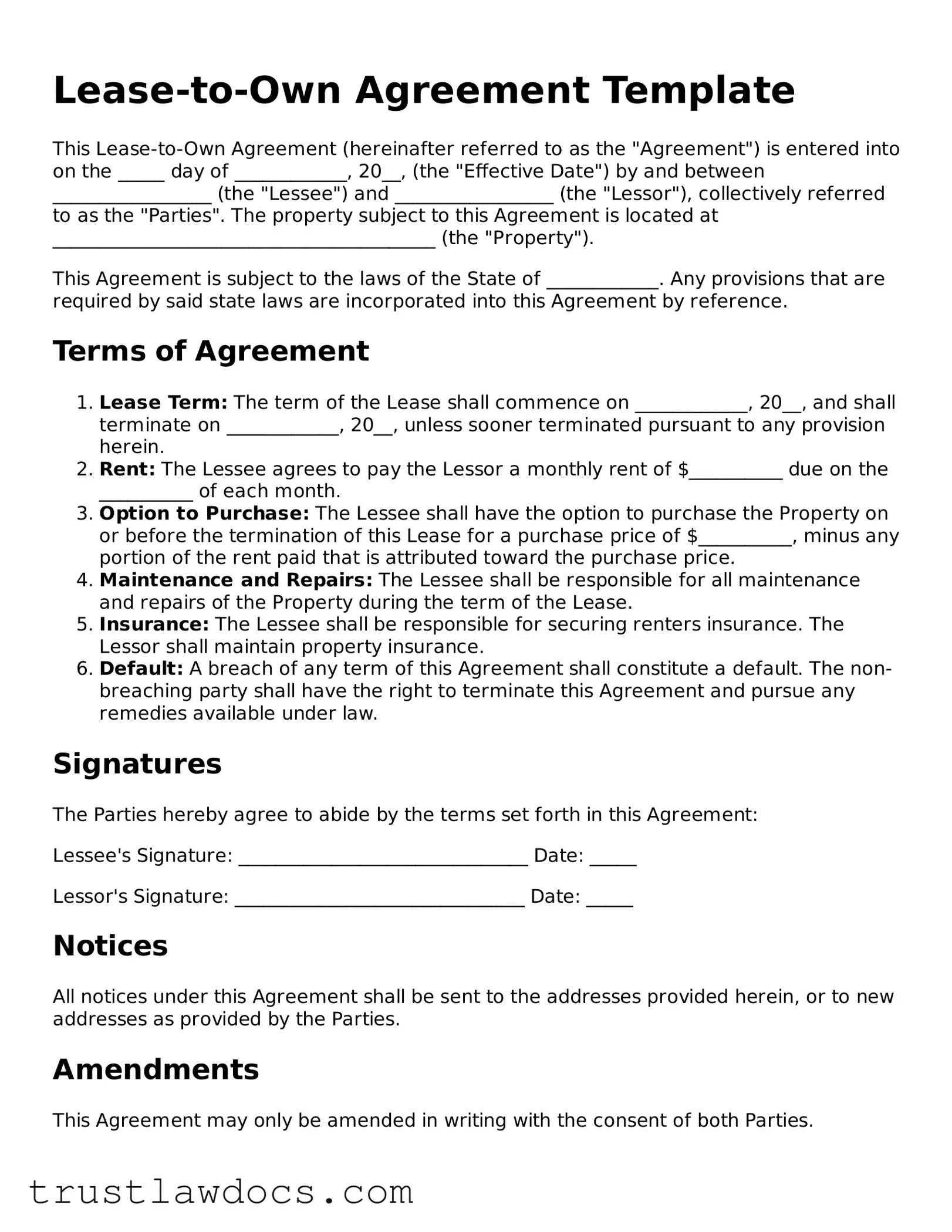What is a Lease-to-Own Agreement?
A Lease-to-Own Agreement is a document that outlines the arrangement between a property owner and a tenant to lease a property for a specified period, with the option for the tenant to purchase the property at the end of the lease term. This agreement includes terms regarding rent payments, the purchase price, and conditions for the sale and purchase of the property.
Who can benefit from a Lease-to-Own Agreement?
Both property owners and tenants can benefit from a Lease-to-Own Agreement. Property owners receive regular rental income while securing a potential future sale, whereas tenants can lock in a purchase price and test the property before committing to buy it.
How is the purchase price determined in a Lease-to-Own Agreement?
The purchase price is usually agreed upon at the beginning of the Lease-to-Own Agreement. This can be based on the current market value of the property or an estimated value at the end of the lease term. It is crucial for both parties to agree on a fair price considering potential market changes.
What happens if the tenant decides not to buy the property?
If the tenant chooses not to purchase the property at the end of the lease term, the agreement typically concludes like any standard lease agreement. The tenant may move out, and the option to buy lapses. Any upfront option fee or portion of rent paid towards the purchase price may be non-refundable, depending on the terms of the agreement.
Can the purchase price change during the lease term?
In most cases, the purchase price agreed upon at the start of the agreement remains fixed throughout the lease term. This is beneficial for tenants, as it protects them from price increases in a rising market. Any change to the purchase price typically requires a renegotiation and amendment of the agreement, agreed upon by both parties.
Is a Lease-to-Own Agreement legally binding?
Yes, a Lease-to-Own Agreement is a legally binding contract as long as it is executed in accordance with state laws and contains all necessary legal elements. Both parties are obligated to adhere to the terms as outlined in the agreement.
What are the risks involved in a Lease-to-Own Agreement?
There are risks for both parties in a Lease-to-Own Agreement. Tenants risk losing the option fee and additional rent paid towards the purchase, should they decide not to buy or fail to qualify for a mortgage at the end of the lease. Property owners risk being locked into a sale price in a rising market and potential legal disputes if the tenant breaches the agreement terms.
How can one terminate a Lease-to-Own Agreement?
Termination clauses vary by agreement but typically include breach of contract, failure to secure financing, or mutual consent. It is important to clearly define termination conditions in the agreement to protect both parties.
Are there any tax benefits with a Lease-to-Own Agreement?
While not outright tax benefits, tenants can benefit from locking in a purchase price without upfront property taxes, and owners receive rental income which is taxable. Specific tax implications for both parties should always be reviewed with a tax professional.
How does a Lease-to-Own Agreement impact the tenant’s ability to secure a mortgage?
Successfully making timely payments under a Lease-to-Own Agreement can positively impact a tenant's credit history, potentially facilitating the process of securing a mortgage. However, tenants should ensure they understand the requirements they must meet to qualify for a mortgage once the lease term ends.
